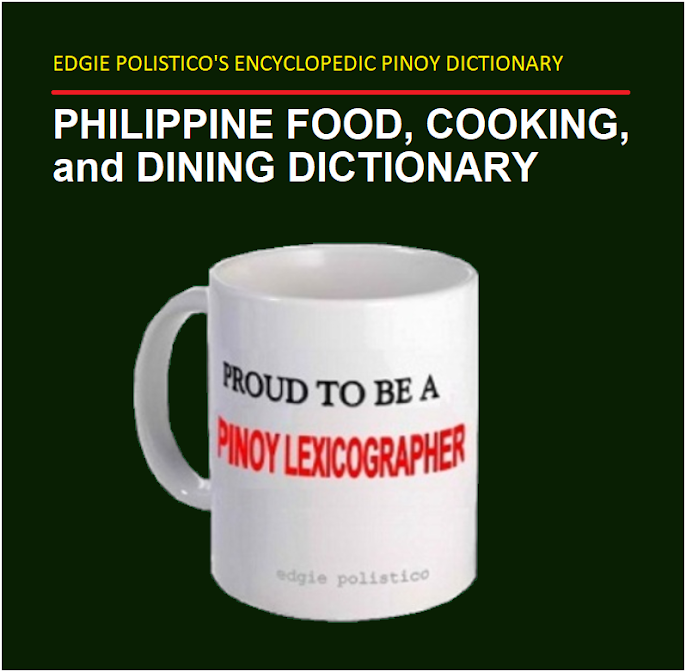buteteng laot - /bu-te-teng la-ot/ Tagalog sea fish /seafood) 1. [n.] porcupine fish \spot-fin porcupinefish (sc.name: Diodon hystrix); 2. [n.] oceanic puffer (sc.name: Lagocephalus lagocephalus). Another species of buteteng laot known plainly as the butete has been banned permanently by the Bureau of Fisheries and Aquatic Resources (BFAR) from gathering, marketing, and consumption, because it naturally contains a toxin called tetrodotoxin which renders the fish unfit for consumption.
Other local common names:
- also spelled as boteteng laot in Tagalog
|
|
|
- butete tunokon, tagutong, or tagutungan in Cebuano
|
- tagutungan in Boholano and Leyteño [western Leyte]
|
- otit in Waray-waray (eastern Samar)
|
|
|
|
|
|
|
|
|
- lukoh itingan or tagutugan in Chavacano (Zamboanga)
|
- dautdotan in Maranao, Tausug, and Samal
|
- buntal in Sinama (Bahasa Bajau of Sulu archipelago)
|
A species of puffer fish considered edible and safe for consumption but has to avoid the internal organs, particularly the liver where a tiny sac of highly deadly poison can be found. As much as possible, only the meat is used in cooking.
Maypay is a Cebuano name for that tiny sac of highly poisonous glands. It's attached to the liver and would require an expert to safely remove it because even a slightest leak could be very fatal. It's far more lethal than
cyanide.
The big-sized liver though is the most sought part of the fish in making the Cebuano linarang with coconut milk. It needs to be an expert to safely remove the tiny monggo-size sac of poison called maypay in Cebuano. It has to be taken out intact because a slightest leakage can be fatal when it contacts the flesh or contaminates the water used in washing the fish.
A slight contact on flesh or contamination of the water used in washing the fish could be fatal. Yes, because maypay is far more lethal than cyanide. It could no longer be removed or rinsed off.
BE EXTRA CAREFUL WHEN YOU PREPARE TO COOK THIS FISH.
|
In my hometown's small fishing village, maypay was used to poison cats that stole food in the kitchen (I felt sorry for the naughty pussy cat).
Porcupine fish can be prepared as tinola (boiled), nilarang tinunoan (boiled with coconut milk and spices), inadobo (adobo-style), pinirito (fried), ginataan (cooked in coconut milk with malunggay or dahon ng sili, and sauteeing first in garlic and other spices the flaked parboiled fish), nilubihan (cooked with grated meat of not-so-matured green coconut fruit), or into Bicolano kinunot (braised shredded fish fillet).
The fish has to be gutted completely and carefully so as not to burst open any of its internal organs to avoid possibly getting poisoned, and the sturdy spikes around the skin have to be removed by parboiling first the whole fish and then pulling out the spikes using pliers.
Vegetables commonly used as suitable optional ingredients when cooking this fish into a soupy ginataan or tinola dish are malunggay or dahon ng sili, talong, okra, kalabasa, sitaw, alugbati, pichay, and/or pako.
The big-sized liver though is the most sought part of the fish when cooking a linarang dish with coconut milk (linarang is boiled fish with different spices and salt to taste). You can have this linarang from some eateries in Cebu City and other towns in Visayas.
While in the Tabuh of Bongao, Tawi-Tawi
While in the Tabuh of Bongao, Tawi-Tawi
While in the Tabuh of Bongao, Tawi-Tawi
"Yong
mga nagsabi na di daw to nakakalason at nakakatikim na sila,
nakaswerte lang sila at magaling yong gumawa ng ulam. Di naman kasi
madaling puputok yong maypay pagka fresh pa yong isda. Baka sa susunod
kapag masyadong kampante na sila, mamalasin na. Wag naman po. Ingat
lang. And I share it here para alam nyo na ano yong isang maliit na
bagay na nakakamatay. Yong sa butete iba pa yon. Mas matindi yon. Mas
delicate. Pati balat nakakalason."
"It's
safer to slice na lang a portion of the liver around the "maypay" at
least, 1-inch diameter or more! Wag nang manghinayang sa matatapong
kapirasong atay, manghinayang sa buhay!"
All photos by Edgie Polistico in this blog are copyrighted. ALL RIGHTS RESERVED.
See Index of Entries here
If you liked this post, share it.
Let us know your opinion on the subject. Feel free to comment in the comment section, below. It is important for us to know what you think.
Tell us what other topics you would like us to write, share, and discuss.












